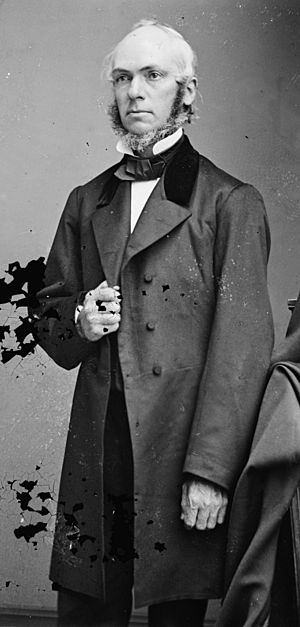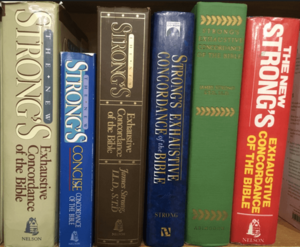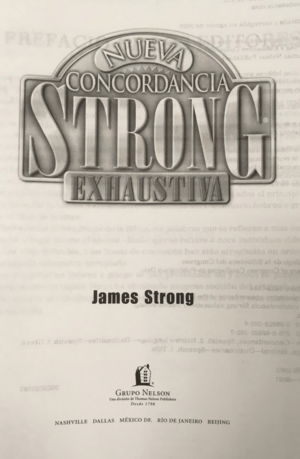Strong's Concordance facts for kids
Strong's Concordance is a special kind of book that helps people study the Bible. Its full name is The Exhaustive Concordance of the Bible. Think of it like a giant index for every single word in the King James Version (KJV) of the Bible. It was created by a professor named James Strong and first published in 1890. He taught about the Bible at Drew Theological Seminary.
Contents
How to Use Strong's Concordance
Strong's Concordance is a powerful tool for anyone wanting to explore the Bible more deeply. It works like a super-detailed index. You can look up any word you find in the Bible, and the concordance will show you every place that word appears. This helps you see how the same word is used in different parts of the Bible. It's great for understanding the meaning of words and phrases.
Understanding Strong's Numbers
One of the most important parts of Strong's Concordance is its special numbering system. Each original word from the Bible's ancient languages (Hebrew for the Old Testament and Greek for the New Testament) is given a unique number. These are called "Strong's numbers."
The main part of the concordance lists every English word from the KJV Bible in alphabetical order. Under each English word, you'll find a list of all the Bible verses where that word appears. Next to each verse, there's a Strong's number.
- The Old Testament uses about 8,674 Hebrew root words. (For example, the Hebrew word for "man" is אֱנוֹשׁ (H582)).
- The New Testament uses about 5,624 Greek root words. (For example, the Greek word for "word" is λόγος (G3056)).
These numbers help you look up the original Hebrew or Greek meaning of the word in special dictionaries found at the back of the concordance. This way, you can understand how the original language word was translated into English.
Not every single word has its own number. Instead, only the main "root words" are numbered. For example, different forms of the Greek word for "love" (like "you love" or "they love") might all share the same Strong's number (like Greek word #25).
Because of Strong's numbers, it's easier to create concordances in different languages. For instance, a Russian Bible concordance was made by matching English words with their Hebrew/Greek Strong's numbers, then finding the Russian equivalent.
Strong's Dictionaries
In his 1890 version, James Strong added two helpful dictionaries to his concordance: one for Hebrew and Chaldee words, and another for Greek words from the New Testament.
Strong explained that these dictionaries are "brief and simple." They are meant to give students a quick way to look up words and get a general idea of their meaning. They are not meant to replace bigger, more detailed dictionaries, but they are perfect for a quick check.
|
See also
- Cruden's Concordance
- Hermeneutics
- Young's Analytical Concordance to the Bible




